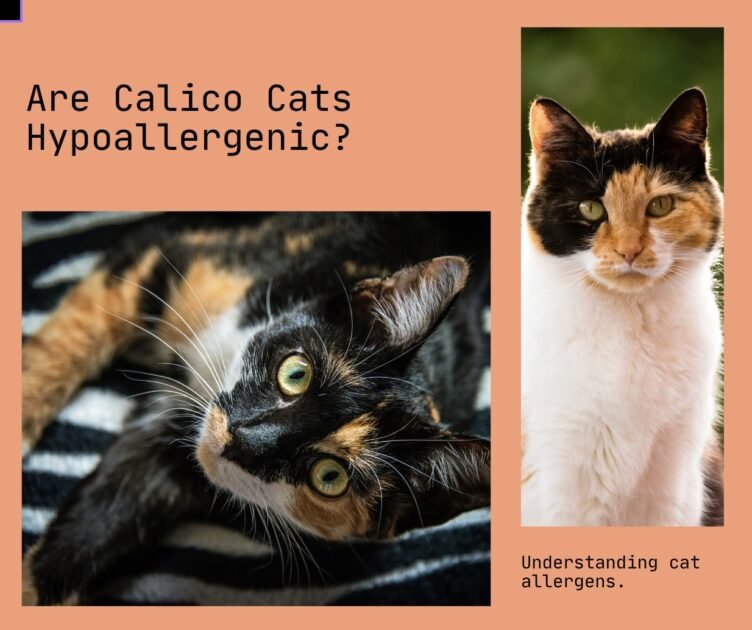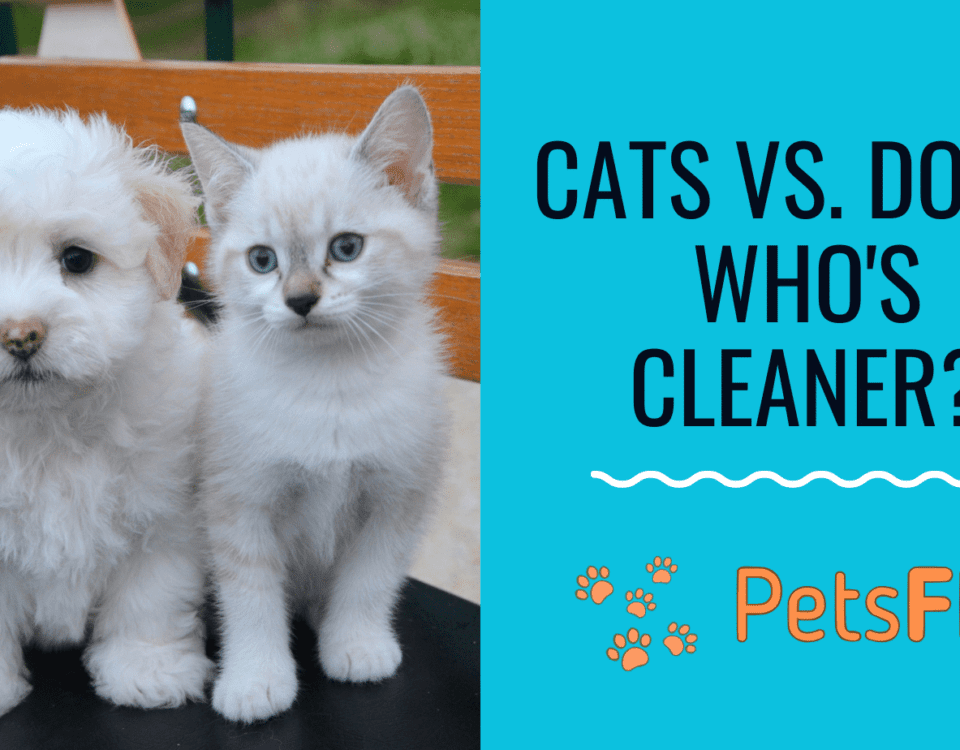


Cow Hock in Cats: How to Identify & Treatment Options
December 31, 2023


Do’s and Don’ts of Scruffing Your Dog: A Comprehensive Guide
December 31, 2023Many people are captivated by the stunning beauty of calico cats, admired for their striking array of colors and unique patterns. These felines are highly sought after by cat enthusiasts, often resembling tabby cats in their appearance.
When considering the addition of a cat to a household, the issue of allergies is a significant concern. For those interested in charming calico cats, it’s natural to wonder about their compatibility with allergy sufferers.
The question then arises: Are calico cats hypoallergenic?
Here’s a quick answer: Calico cats are generally not considered hypoallergenic. The potential for triggering allergies in people is present as long as a cat sheds its fur and produces dander. While some calico cats may cause fewer allergic reactions than others, this largely depends on the breed and the type of fur they have since calicos represent a color pattern rather than a specific breed.
This article explores the traits of calico cats, examines hypoallergenic cat breeds, and offers strategies for managing cat allergies effectively.
What Are Calico Cats?
Calico cats are distinguished not by their breed but by their unique coat coloration, which includes a mix of orange, black, and white hues.
The term “calico” is derived from a type of multicolored fabric initially imported from India, reminiscent of the cat’s varied coat patterns.
This distinct coloration appears in various cat breeds and results from specific genetic factors influencing coat color.
Also, Read: 18 Cat Breeds With Very Long Legs Comprehensive Guide
Genetics of Calico Cats
Calico cats have a unique coat color due to special genetics. They are mostly female because their coat color comes from genes on the X chromosome.
Females have two X chromosomes, each carrying genes for either orange or black fur. In each cell, one X chromosome gets turned off randomly, so some cells make orange fur and others black, creating a patchy look. The white in their fur is from a different gene, not on the X chromosome.
Male Calicos are rare and have an extra X chromosome, making them usually sterile. This genetic pattern is what gives Calico cats their distinct appearance.
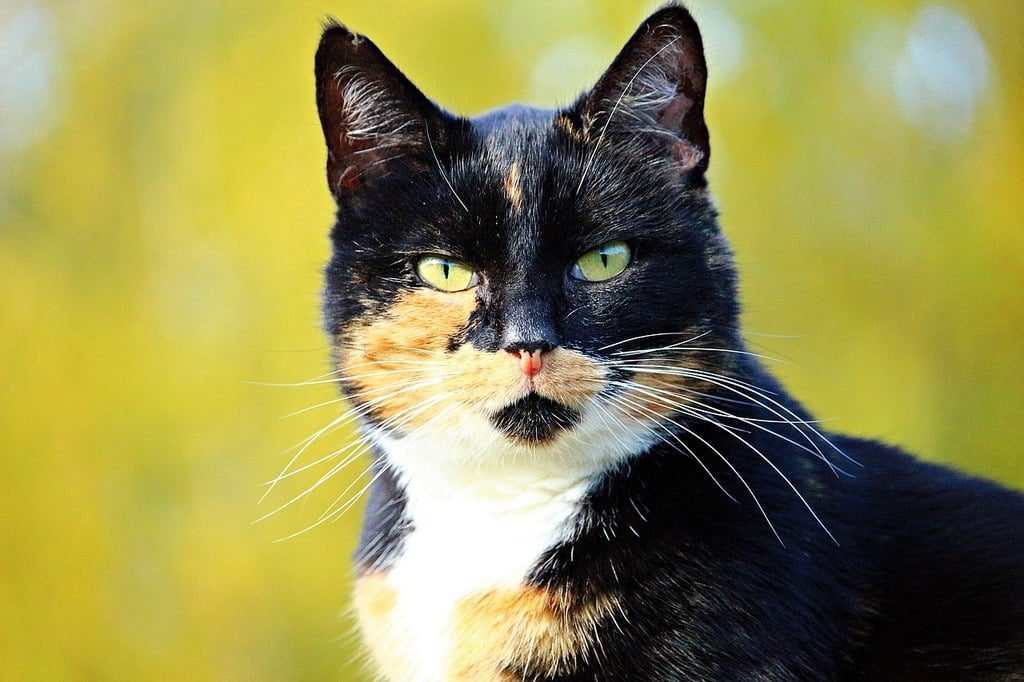

History of Calicos
Historically, they have been revered in many cultures for their beauty and are often associated with good luck and fortune. While their exact origin is unclear, they are believed to have roots in Egypt and have been celebrated in places like Japan, where they are considered a symbol of prosperity.
Today, Calicos are cherished as pets worldwide, admired for their striking appearance and the folklore that surrounds them.
Key Traits of Calico Cats
Calico cats are recognized for their lively and affectionate nature, often displaying outgoing personalities.
They tend to be friendly, intelligent, and versatile, quickly adapting to various home settings.
In many cultures worldwide, calico cats are also considered symbols of good fortune, contributing to their global popularity.
Editor’s Pick: How To Prevent Cats Biting and Humping Behavior?
What Are Hypoallergenic Cats?
“Hypoallergenic” means a lower likelihood of triggering allergic responses.
Regarding cats, breeds classified as hypoallergenic tend to produce less of the allergenic protein Fel d 1, which is present in their saliva, urine, and dander. This protein is primarily responsible for allergic reactions in people.
Fel d 1 Protein
The primary allergen responsible for cat allergies is the Fel d 1 protein. While the levels of this protein can differ among individual cats, they are not associated with the cat’s coat color or pattern.
The production of Fel d 1 is influenced by various factors, including the cat’s gender, age, and health status, rather than its appearance.
Popular Hypoallergenic Cat Breeds for People with Allergies
Several cat breeds are known for producing less Fel d 1 protein, making them relatively hypoallergenic.
These include:
- Sphynx
- Burmese
- Javanese
- Oriental Shorthair
- Ocicat
- Cornish Rex
- Devon Rex
- Balinese
- Russian Blue
- Bengal
- Siberian
Are Hypoallergenic Cats a Scam?
“Hypoallergenic cats” is a bit of a misnomer as no cat breed is completely free of allergens. These cats, like Siberians or Balinese, are thought to produce fewer allergens, specifically the protein Fel d 1, which can be better for people with mild allergies.
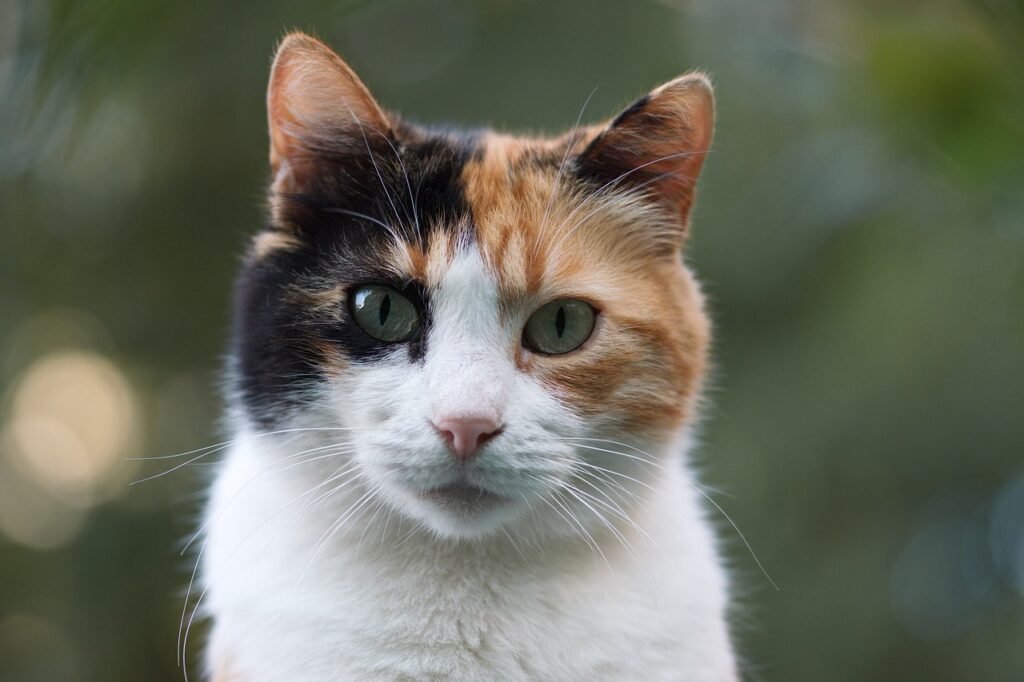

Calico Cat Closeup
However, individual reactions can vary, and there’s no guarantee that a hypoallergenic cat won’t trigger allergies at all. It’s important for those with allergies to spend time with a cat before adopting to see how they react.
Recommended Read: Why does cat litter keep getting stuck to my cat’s bum? [Solutions]
Are Calico Cats Hypoallergenic?
While no calico cat is inherently hypoallergenic, assessing their potential as allergens can be challenging because “calico” refers to coat coloring, not a specific breed. Calicos can belong to a variety of species.
The amount of shedding and dander a cat produces significantly influences its potential allergenic impact. The degree of shedding with this coloring varies among breeds since calico is a coat pattern rather than a breed.
Regardless of their appearance, all cats have fur and dander to some extent, which means they cannot be considered fully hypoallergenic. This includes calico cats, who will always have some level of hair and dander.
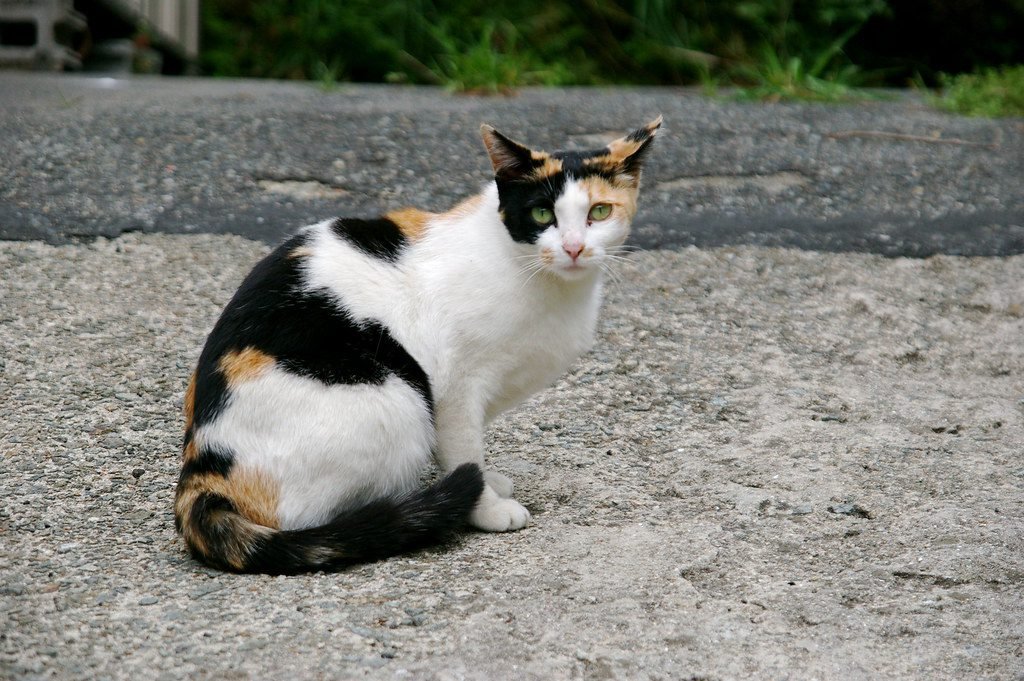

Calico Cat Sitting
Due to increased shedding and dander distribution, long-haired calicos often pose a more significant challenge for allergy sufferers.
Conversely, some short-haired breeds, like the Russian Blue, might shed more than expected.
The concept of an utterly hypoallergenic cat is a misconception. Even seemingly hairless breeds like the Devon Rex and Sphynx have minimal fur. These breeds might be a better choice for people with mild allergies, but they are not 100% hypoallergenic.
In summary, a cat’s calico coloring does not dictate its shedding levels; it is determined by its specific breed. Some calico species may be less problematic for allergy sufferers, but no cat breed is entirely hypoallergenic.
How To Manage Cat Allergies?
If you have cat allergies but wish to live with a cat, there are several methods you can employ to minimize your exposure to allergens:
1: Frequent Cat Baths
While regular bathing isn’t typically necessary for indoor cats, it becomes essential for allergy sufferers, particularly with calico cats. Bathing your cat regularly can reduce allergen levels by up to 84%.
For optimal results, bathe your calico cat weekly using a cat-specific shampoo, as their skin pH differs from that of humans. Remember to wash your hands thoroughly after the bath.
2: Spaying or Neutering Your Cat
All cats produce allergens, but the amount can vary. Studies, like those from the Veterinary Medical Center in Ohio, indicate that spayed or neutered cats have fewer allergens.
Sterilizing your calico cat can help reduce allergy symptoms and is a consideration if you’re not planning to breed your cat.
3: Utilizing Air Purifiers
Air purifiers can effectively control the spread of allergens in your home. Placing an air purifier in the room where your cat spends most of its time can be particularly beneficial.
4: Seeking Medical Advice
Medical intervention may be necessary if you’re experiencing severe allergy symptoms and previous measures aren’t effective. Allergy immunotherapy can be helpful.
Still, if the allergies severely impact your quality of life, it might be better to reconsider having a calico cat or any other pet. Constantly cleaning and restricting your cat to one room can be overwhelming.
5: Allergy Medication Options
Should you continue to suffer from allergy symptoms despite taking preventive measures, it’s advisable to consult with your healthcare provider regarding allergy medications.
Options such as over-the-counter antihistamines, nasal corticosteroids, and eye drops can help alleviate typical allergy symptoms, including sneezing, itching, and nasal congestion.
Common Calico Breeds And Their Shedding Behaviors
Generally, the amount of shedding in calico cats depends on the breed rather than the coat pattern. Here are some common species that can have calico patterns and their typical shedding behaviors:
- American Shorthair: Known for its robust health and friendly disposition, it is a moderate shedder, requiring regular grooming to manage its shedding.
- Maine Coon: This large and friendly breed has a long, luxurious coat. Maine Coons are heavy shedders, especially during seasonal changes, and benefit from frequent grooming.
- Persian: Famous for their long, silky fur and calm demeanor, Persian cats are high shedders. Their luxurious coats require daily grooming to prevent mats and control shedding.
- Domestic Shorthair: A mixed breed with varied ancestry, Domestic Shorthairs can have calico patterns and typically have moderate shedding, which is manageable with regular grooming.
- Siberian: Siberians are moderate to high shedders known for their affectionate nature and dense coats. Regular brushing helps maintain their skin and reduce shedding.
| Breed | Shedding Level | Grooming Frequency |
|---|---|---|
| American Shorthair | Moderate | Regular |
| Maine Coon | Heavy | Frequent |
| Persian | High | Daily |
| Domestic Shorthair | Moderate | Regular |
| Siberian | Moderate to High | Regular |
.
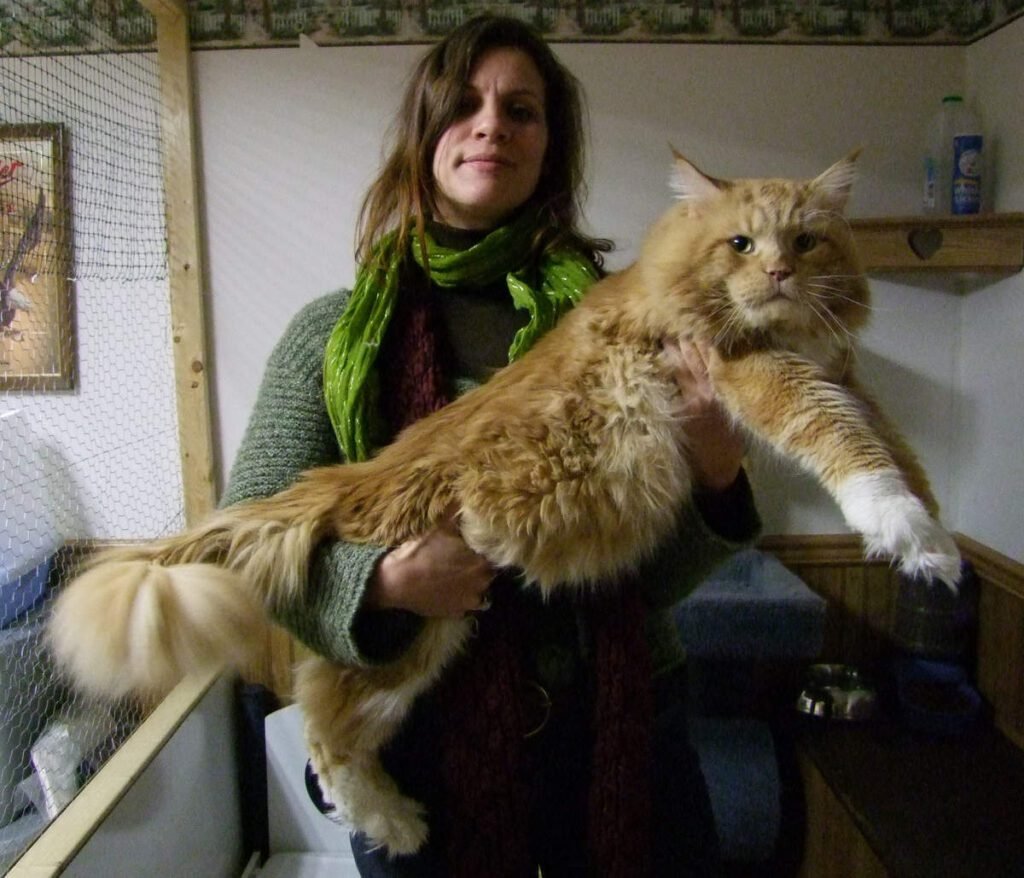

Maine Coon Cat
How Much Do Calico Cats Cost?
The cost of a Calico cat varies depending on several factors such as breed, age, and where you acquire it from.
Generally, adopting a Calico from a shelter can cost between $50 to $150, covering basic health check-ups and vaccinations.
If you’re purchasing a Calico from a breeder, especially if it’s of a specific breed like a Maine Coon or Persian, the price can range from $400 to over $1,000.
This higher price often reflects the cat’s lineage, health screenings, and early life care. Keep in mind, that additional costs for care essentials and ongoing maintenance should also be considered when budgeting for a new Calico cat.
Final Thoughts
Indeed, even though calico cats are not naturally hypoallergenic, individuals with allergies can still enjoy their company by effectively managing allergens in their surroundings.
It’s essential to recognize that the level of allergens can differ from one cat to another, irrespective of their breed or the calico coat pattern they exhibit.
To make an informed decision, allergy sufferers should spend time with a calico cat before finalizing the adoption to assess if their allergies are manageable with that specific cat. This approach ensures a comfortable living situation for the cat and its human companion.
Read Next: Cow Hock in Cats: How to Identify & Treatment Options
References:
[1] Jalil-Colome, J. et al. Sex difference in Fel d 1 allergen production. J Allergy Clin Immunol. 1996 Jul;98(1):165-8. DOI, Retrieved December 31, 2023.
[2] Allergic to your cat? Easy tips to prevent and control your allergy. DOI, December 31, 2023.
[3] Sparkes, AH: Human allergy to cats: A review of the impact on cat ownership and relinquishment. J Feline Med Surg. 2022 Jan; 24(1): 43–52. DOI, Retrieved December 31, 2023.
[4] Sparkes, A. H. (2022 Jan). Human allergy to cats: A review for veterinarians on prevalence, causes, symptoms, and control. PubMed Central (PMC). Retrieved from https://www.ncbi.nlm.nih.gov/pmc/articles/PMC8721530/
